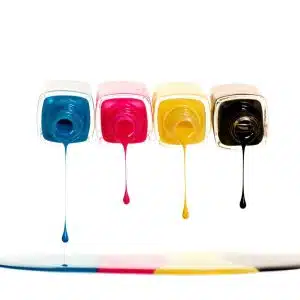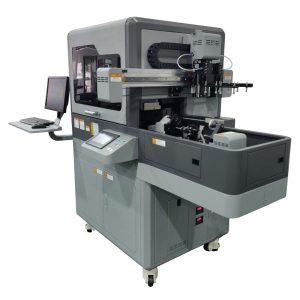Digital primers
There are differences between UV ink for digital printing and solvent-based printing ink for pad printing. Additionally, there is a major difference in how these two printing technologies print images. However, there are also commonalities between the two technologies, such as the use of digital primers. Irrespective of the printing technology, there are several materials that are hard to print on, such as stainless steel, polypropylene, soft touch materials, etc. For ink to stick to these materials, it needs help—this is where UV adhesion primers come in.
The functions of a primer include promoting ink adhesion, enhancing color coverage, and promoting uniform ink wetting on a substrate. It is also important to note that there is no one adhesion promoter that is effective on all substrates.
Boston Industrial Solutions, Inc., offers several UV digital primers: G1, M74F, M87, Fi, PP Primer, PP3, JP254, etc. Additionally, we are constantly innovating to create new and improved adhesion promoters. Below, we will review each adhesion promoter.
M87 Primer
Substrates:
- Stainless steel (SUS)
- Powder-coated metals (Rilsan Nylon 11, Prismatic Powders)
- Aluminum, iron, copper,
- Melamine (Formica)
- Acrylics
The M87 works on a wide range of materials. Its unique characteristics include having a low smell. Once applied, it dies in less than 20 seconds and is ready for printing in under 2 minutes.
G1 Primer
- Glass
- Tile and ceramics
- Enamel coatings
- Tritan
This primer, once applied, creates an invisible layer on glass and tile substrates, which offer excellent adhesion and abrasion resistance. It is excellent for glass-printing applications.
M74F Primer
- Stainless steel (SUS)
- Powder-coated metals (Rilsan Nylon 11, Prismatic Powders)
- Aluminum, iron, copper,
- Acrylic material
This is the best primer for the above-mentioned materials. Once applied, the UV-printed product will pass scratch, tape, and wash tests. It is the perfect primer for industrial and promotional products. Typical applications include aerospace metal printing and drinkware printing on tumblers.
Fi Primer
- Coated metals
- Dense plastic materials
- Carbon Fiber
This is one of our new developments. This primer not only improves adhesion to the above materials but also eliminates static from the printed materials.
PP Primer
Substrates:
- Polypropylene
- Polyethylene
- HDPE
There are several printing plastics that have low surface energy. These plastics are impossible to stick ink to, whether it is solvent-based ink or ink for inkjet printers. The PP Digital primer, once applied to the substrate, increases the surface energy of the material. It is ready for printing 30 seconds after application. Additionally, printers have a window of up to 36 hours to print on their substrates after application.
PP3 Primer
Substrate
- Plastics
This is a low-solid-count digital primer for most plastics. The PP3 is an excellent plastic adhesion promoter, specifically general-purpose plastics. It is mild and has a low, sweet smell.
JP254 Primer
Substrates:
- Stainless steel (SUS)
- Powder-coated metals (Rilsan Nylon 11, Prismatic Powders)
- Aluminum, iron, copper,
- Melamine (Formica)
- Glass
- Tile and ceramics are versatile materials that are commonly used for flooring and wall coverings.
- Enamel coatings
The JP254 is a Jettable primer (adhesion promoter)—it is a printable digital adhesion promoter. It is printed on demand, exactly where and when you need it. This primer eliminates the need to manually apply the primer to substrates.
Lastly, contact us today to learn more about our digital primers. Visit our support hub for any questions that you have and subscribe to our YouTube channel for the latest printing technology updates.











